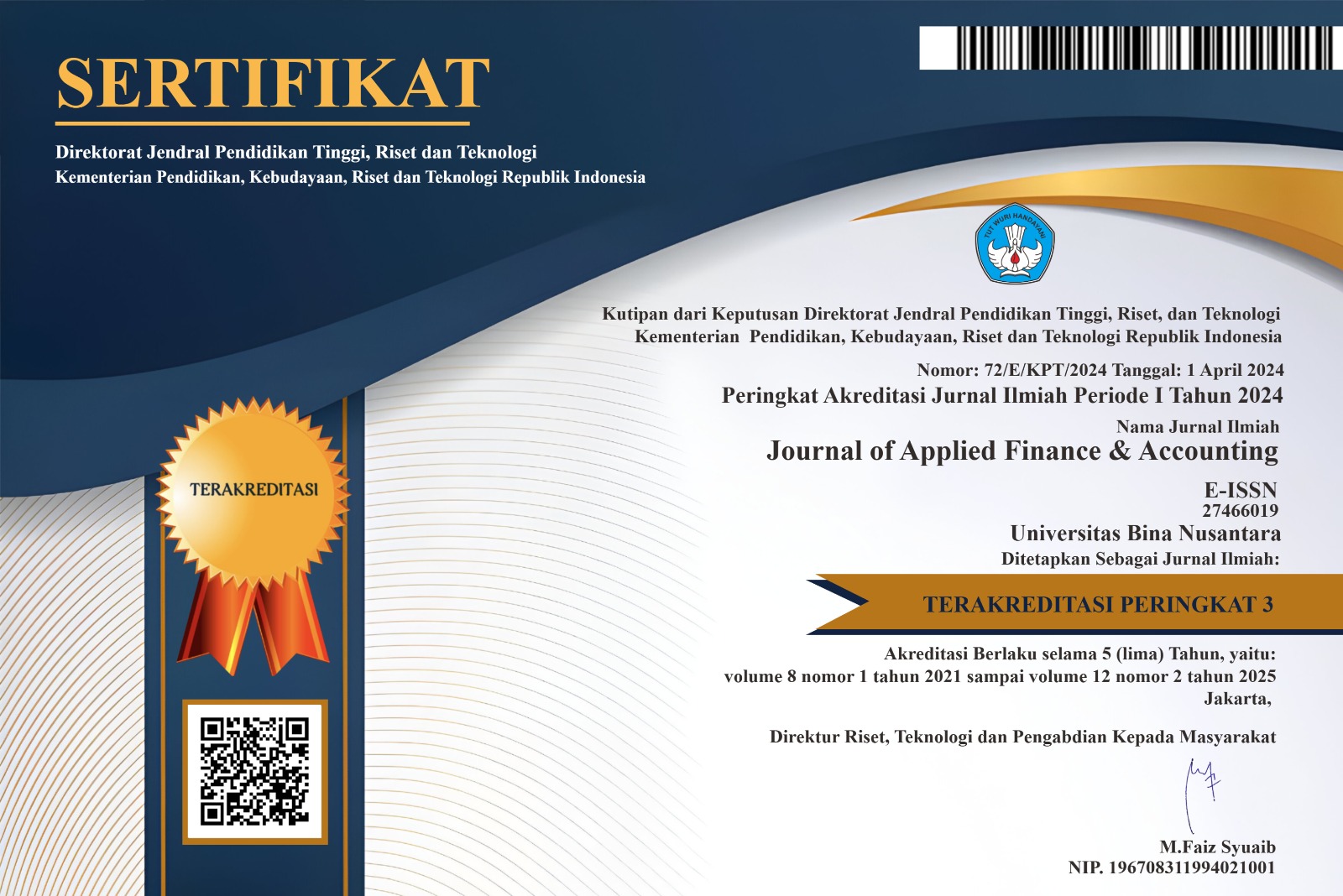Valuation in Multifinance Acquisition by Bank MDR: A Case Study
DOI:
https://doi.org/10.21512/jafa.v1i2.127Keywords:
Acquisition, valuation, multifinance companies.Abstract
Bank MDR as one of leading banks in Indonesia, aims to capture 20 to 30% of revenue share in each of their businesses, including Consumer Finance. One crucial sub-segment in Consumer Finance Business is Automotive Loan, which currently dominated by Multifinance companies. To increase the pace of becoming dominant in Automotive Loan, â€inorganic initiatives†are required to supplement the organic efforts to grow the revenue shares of Bank MDR. In early 2009, Bank MDR engages in inorganic investment by acquiring a multifinance company, Tunas Finance. The main purpose of this study is to examine an alternative approach to value an acquisition of a multifinance company, as well as to observe whether the acquisition done by Bank MDR is creating value for its shareholders. Valuation of an acquisition is not fundamentally different from valuation of any firm, however, valuing a multifinance company poses particular challenges. Given that Bank MDR has announced that it would pay 290 billion rupiahs for 51% shares of Tunas Finance, this study, following Excess Return Model Valuation (Damodaran, 2002), shows results that acquirer shareholders still earn positive value from the acquisition.
Downloads
Published
Issue
Section
License
Authors who publish with this journal agree to the following terms:
Authors retain copyright and grant the journal right of first publication with the work simultaneously licensed under a Creative Commons Attribution License that allows others to share the work with an acknowledgement of the work's authorship and initial publication in this journal.
Authors are able to enter into separate, additional contractual arrangements for the non-exclusive distribution of the journal's published version of the work (e.g., post it to an institutional repository or publish it in a book), with an acknowledgement of its initial publication in this journal.
Authors are permitted and encouraged to post their work online (e.g., in institutional repositories or on their website) prior to and during the submission process, as it can lead to productive exchanges, as well as earlier and greater citation of published work (See The Effect of Open Access).




